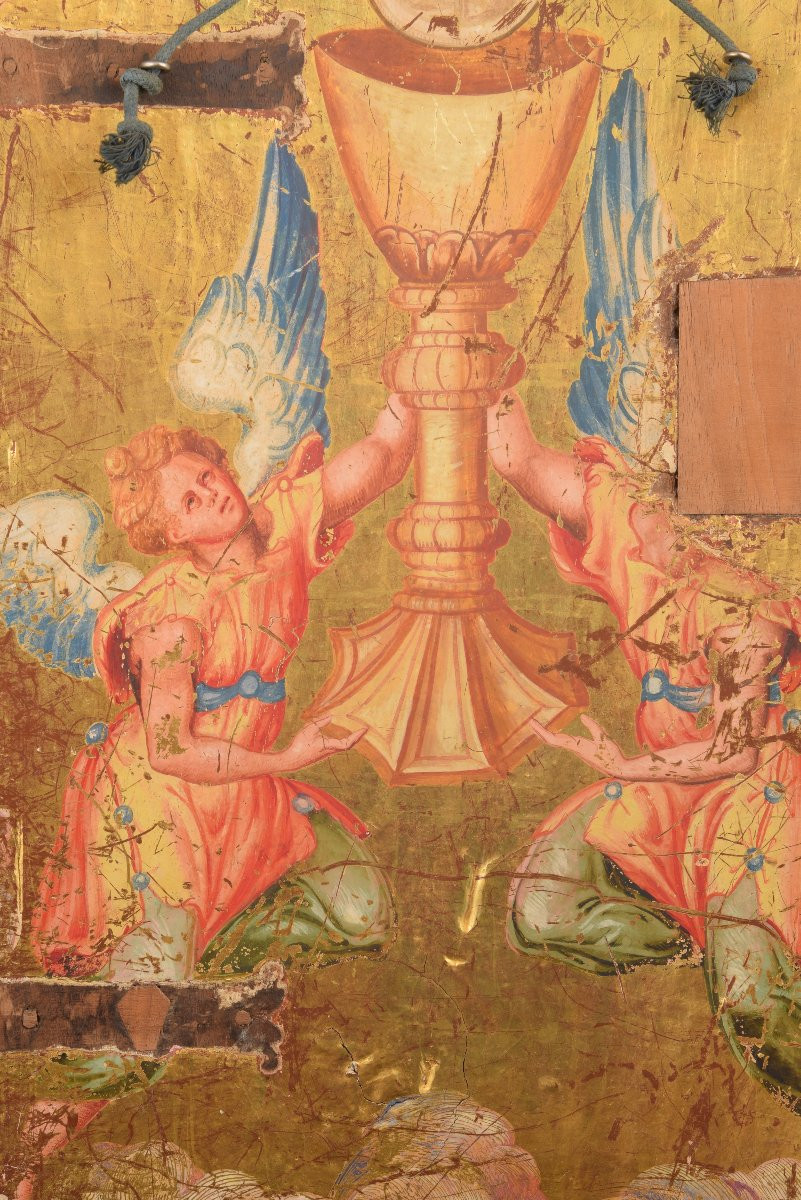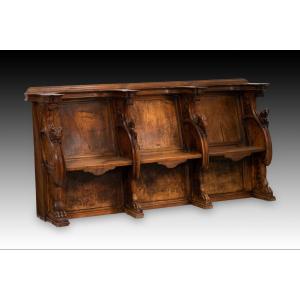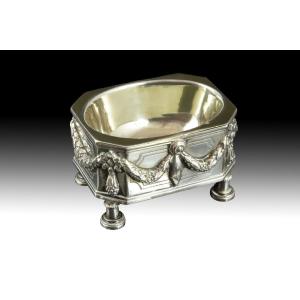On one side of the coin, a relief continues the theme of the Resurrection of Christ: Jesus, dressed in the golden shroud, appears amidst a beam of light and clouds, standing above the tomb and raising one arm while holding in the other hand a staff topped with a cross and a flag waving in the wind; on the lower part, four soldiers, in different postures and attitudes. The other side shows a chalice with a Holy Host (in which a crucified Christ appears flanked by the Virgin and Saint John in grisaille), lifted by two angels; all the elements are placed on a gold background, in a space surrounded by clouds; on one side, there is a piece of wood on which, originally, there would have been a bolt, and on the other, there are the remains of two hinges. It is this element that suggests that the relief was surely a tabernacle door. The piece incorporates a decoration common in Renaissance and Baroque tabernacles. Compare, for example, with the 17th-century altarpiece of the main altar of the church of the Monastery of Santa Isabel in Madrid, or with others preserved in private collections. The scene of the Resurrection recalls, through details such as the variety of postures of the soldiers, the anatomy of Christ, the movement of the shroud around his body, etc., remarkable pieces such as the 16th-century Renaissance-style relief preserved in the Monastery Museum of the Cistercian Abbey of Cañas, in La Rioja. Although they are part of an altar with varied themes, the emphasis is always on Salvation, since they are intended to contain the Holy Host. -
Size: 32x5x52 cms





































 Le Magazine de PROANTIC
Le Magazine de PROANTIC TRÉSORS Magazine
TRÉSORS Magazine Rivista Artiquariato
Rivista Artiquariato